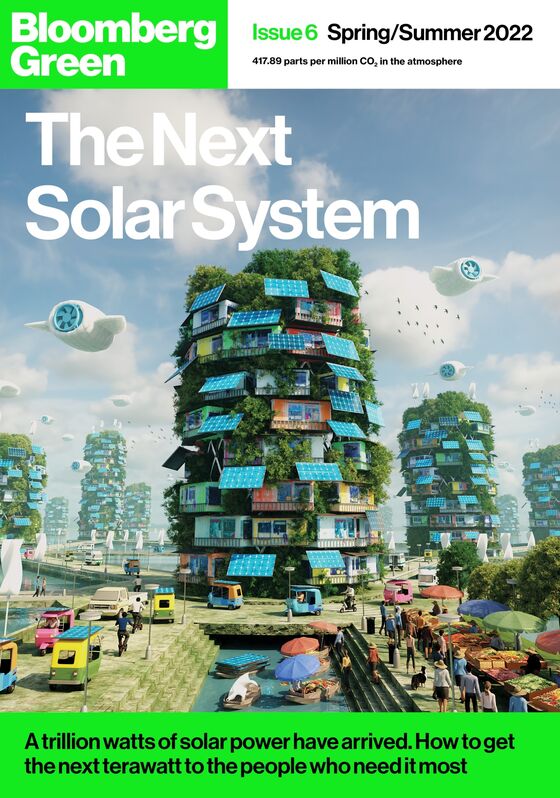Solar’s First Trillion Watts Arrives During a Wartime Energy Transition
Efforts to fight climate change often adopt the language of war. It’s aspirational, in a dark way.
(Bloomberg) --
The energy transition has become a weapon.
That’s one consequence of the Russian invasion of Ukraine. If war is a force that gives us meaning, this one is redefining the global energy system. What had until recently been Europe’s decades-long pursuit of a green agenda to replace coal and natural gas with wind turbines and batteries has become a matter of wartime urgency. Leaders in Brussels, Berlin, Paris, and Warsaw woke up to a new reality in which spending up to $1 billion per day on Russian fossil fuels meant financing the missiles exploding in Kyiv. So the transition accelerates.

Efforts to fight climate change often adopt the language of war. It’s aspirational, in a dark way. Scientific warnings and extreme weather haven’t yet spurred the global economy to fully mobilize against greenhouse gas. So those who want more urgency resort to combat metaphors. Now an actual war might turn, in part, on curbing or even embargoing one of the biggest sources of fossil fuels.
Clean energy isn’t waiting for a geopolitical shift. The world stands on the verge of installing its one-thousandth gigawatt of solar electricity. The road to that milestone — the first solar terawatt — started with the invention of primitive panels in the 1950s. The second terawatt will come in less than four years, according to BloombergNEF. It’s possible that India, with a new net-zero goal, will play a China-size role in the next stage.
The growing markets for renewables haven’t escaped the inequities that shape the fossil economy. Microfinance businesses bringing solar rigs to rural Africa end up turning off the lights on villagers and refugees when the payments stop, and mircogrids already built in Indonesia are shutting off for lack of funding. The planet’s cheapest energy source is, somehow, still unaffordable for those who need it most.
Welcome to the sixth issue of Bloomberg Green’s magazine.
Stories from the latest issue will continue rolling out until early April, and everything we’ve published will be available on this collection page. The only magazine focused on climate and the energy transition is sent to our all-access subscribers, so sign up today to receive a print edition along with full digital access to Bloomberg Green. Here are some of the highlights so far…
- Meet the new Arctic scientists. Inuit groups are reshaping climate research with local knowledge from living with ice.
- The rich are different. They account for far more emissions, regardless of the wealth of the nation where they live — and we have the data to prove it.
- What happens when London’s housing crisis meets its flood-prone future? These maps show the areas at risk.
- The giant rock statues of Easter Island that have survived from antiquity face an uncertain future due to climate change.
- This green building is flunking New York’s climate law. And one of Manhattan’s real estate powerhouses isn’t happy about it.
- Dam builders around the world are pushing into high-risk areas, often based on outdated climate data.
- The confessions of a carbon seller who made millions on faulty offsets and now wants to fix a broken system.
- Kim Stanley Robinson’s plan to save the Doomsday Glacier: send the navy and the oil industry to Antarctica.
- The world’s greenest insurance giant faces the choice of burning its clients or burning more carbon.
- The bankers who lend billions to the oil and gas industry aren’t feeling the pinch of net-zero just yet.
©2022 Bloomberg L.P.

